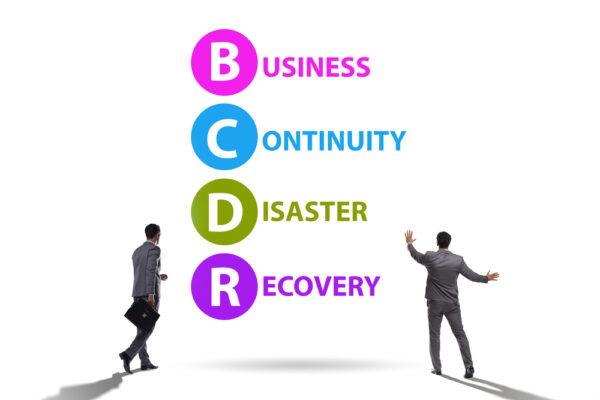A Business Continuity Plan (BCP) is a comprehensive document that outlines how a company will continue operating during an unplanned disruption in service.
It includes planning for risk management, disaster recovery, and the continuation of critical business operations.
BCPs are designed to help organizations quickly recover from a disaster by providing clear steps to minimize loss and maintain or quickly resume key operations (TechTarget).
In today’s business landscape, it has become increasingly crucial for organizations to have robust plans in place to ensure their operations can continue seamlessly in the face of unexpected disruptions.
But what exactly are business continuity plans? How do they help businesses navigate through challenging times? And what are the key components that make up an effective business continuity plan?

In this discussion, we will explore the definition of business continuity plans, highlight their importance, delve into the essential components, and explore the strategies involved in developing a comprehensive plan.
Prepare to gain valuable insights into this critical aspect of organizational resilience, as we unravel the world of business continuity planning.
Key Takeaways
- Business Continuity Plans (BCP) are comprehensive strategies that outline steps and procedures for maintaining critical business functions during disruptions or disasters.
- BCP is essential for organizations of all sizes and sectors to minimize downtime, protect the organization’s reputation, and ensure employee well-being.
- BCP helps mitigate risks and ensure business resilience by identifying and mitigating potential threats and incidents, providing alternative communication channels and protocols, and reducing disruptions.
- BCP is crucial for long-term sustainability, as it minimizes financial losses, maintains customer trust, and enables organizations to quickly recover functions in the event of a disruption.
Definition of Business Continuity Plans
A business continuity plan, also known as a BCP, is a comprehensive strategy that outlines the steps and procedures an organization will take to ensure the continuation of critical business functions in the event of a disruption or disaster.
It is a proactive approach that helps organizations identify potential threats and assess their potential impact on business processes.
By doing so, businesses can develop strategies to mitigate the impact and ensure the availability of resources, employees, and infrastructure needed to maintain critical business functions.
The purpose of a business continuity plan is to minimize downtime, protect the organization’s reputation, and ensure the well-being of employees.
These plans are essential for organizations of all sizes and sectors, as they help mitigate risks and ensure business resilience in the face of unforeseen events.
Importance of Business Continuity Planning
Business continuity planning is crucial for organizations to mitigate the impact of natural disasters, ensure uninterrupted business operations, and protect critical business functions.
By having a well-thought-out plan in place, businesses can minimize downtime, reduce financial losses, and maintain customer trust.
With the increasing frequency and severity of disasters, it is essential for companies to prioritize business continuity planning to safeguard their operations and ensure long-term sustainability.
Mitigating the Impact of Natural Disasters
In the face of natural disasters, organizations must prioritize the implementation of robust business continuity plans to safeguard their operations and minimize the disruption caused by these events.
Natural disasters, such as hurricanes, earthquakes, and floods, can have devastating effects on businesses.
To mitigate the impact of these disruptive events, organizations should consider the following:
- Conducting a thorough business impact analysis to identify critical processes and resources that need protection.
- Developing and implementing comprehensive emergency management and business continuity management systems.
- Creating a disaster recovery plan and contingency plans that outline steps to be taken in the event of a natural disaster.
Ensuring Uninterrupted Business Operations
Ensuring uninterrupted business operations is crucial for organizations, making business continuity planning an essential aspect of their overall risk management strategy.
Business continuity plans are designed to identify and mitigate potential threats and incidents that could disrupt the normal operations of a business.
By having a comprehensive plan in place, organizations can minimize the impact of emergencies and quickly recover their functions in the event of a disruption.
To illustrate the importance of business continuity planning, let’s consider a hypothetical scenario where a company experiences a major security breach that compromises their communication systems.
Without a proper plan in place, the company would struggle to communicate with their stakeholders, leading to significant disruptions in their operations.
However, with a well-developed business continuity plan, the company would have alternative communication channels and protocols to ensure that their operations continue smoothly, minimizing the impact of the incident.
The table below highlights some key elements that business continuity plans typically address:
| Element | Description |
|---|---|
| Risk Assessment | Identifying potential threats and vulnerabilities to the organization’s operations |
| Business Impact Analysis | Assessing the potential impact of disruptions on critical functions and processes |
| Emergency Response | Defining the actions to be taken during an emergency to ensure the safety of employees and assets |
| Communications Plan | Establishing protocols for internal and external communications during a disruption |
| Recovery Strategies | Outlining strategies and procedures to restore critical functions and resume normal operations |
Protecting Critical Business Functions
Protecting the vital functions of an organization is a critical priority addressed by business continuity planning.
In order to ensure the uninterrupted operation of business processes, organizations must identify and prioritize their critical functions.
This involves a thorough assessment of all business operations to determine which processes are essential for the organization’s survival and success.
To protect these critical functions, senior management must develop recovery strategies and plans.

These plans outline the steps to be taken in the event of a disruption, and they include measures to minimize the impact of any potential threats.
Key employees should be identified and trained to handle critical processes, ensuring that the organization can continue to function even in the face of adversity.
Components of a Business Continuity Plan
When it comes to creating a comprehensive Business Continuity Plan, there are three key components that need to be addressed.
The first is conducting a Business Impact Analysis, which involves assessing the potential consequences of disruptions to the organization.
Next, it is crucial to identify potential threats and risks that could impact the business’s operations.
Lastly, defining critical business functions and processes ensures that the plan focuses on the most important aspects of the organization’s operations.
Conducting a Business Impact Analysis
Conducting a comprehensive business impact analysis is a crucial step in developing a robust and effective business continuity plan.
This analysis helps organizations identify and prioritize key processes, critical supplies, and potential vulnerabilities that may arise during business continuity events.
It involves assessing the financial impact of disruptions and establishing guidelines for business impact mitigation.
To conduct a thorough business impact analysis, organizations can utilize business continuity plan templates and leverage business continuity management methodologies.
The analysis should consider various scenarios and evaluate the potential consequences of each scenario.
By conducting this analysis, organizations can develop an incident response plan and implement appropriate measures to minimize the impact of disruptions.
This analysis is an essential component of a continuity planning suite and supports the continuity policy implementation.
Identifying Potential Threats and Risks
What are the key components of a business continuity plan when it comes to identifying potential threats and risks?
To ensure a comprehensive business continuity strategy, it is crucial for organizations to identify and assess potential threats and risks that may disrupt their operations.
This involves the active involvement of business continuity professionals who conduct various business continuity activities to mitigate risks and prepare for potential disruptions.
To assist in this process, organizations can create a table to systematically identify and categorize potential threats and risks. Here is an example:
| Threat Category | Potential Threats | Risks |
|---|---|---|
| External Threats | Natural disasters (e.g., hurricanes, earthquakes) | Supply chain disruptions, property damage |
| Technological Threats | Cybersecurity breaches, system failures | Data loss, operational downtime |
| Human Threats | Employee strikes, sabotage | Loss of productivity, reputational damage |
| Environmental Threats | Pollution, environmental accidents | Regulatory fines, legal liabilities |
| Operational Threats | Equipment failure, power outages | Production delays, financial losses |
Defining Critical Business Functions and Processes
To ensure the continued operation and resilience of an organization, it is essential to define critical business functions and processes as part of a comprehensive business continuity plan.
By identifying these key functions and processes, a company can prioritize its resources and efforts to maintain operations during times of crisis.
This involves understanding the various components that make up the organization’s supply chain, human resources, and emergency responders.
In defining critical business functions and processes, there are three key considerations:
- Supply chain: Identifying the core suppliers and dependencies is crucial to ensure the organization can continue to deliver products or services.
- Human resources: Recognizing the key roles and responsibilities within the organization is essential for maintaining productivity and efficiency.
- Emergency response: Establishing a plan for responding to emergencies is vital to protect employees, assets, and the organization’s reputation.
Developing a Business Continuity Strategy

When it comes to developing a business continuity strategy, one important aspect is creating contingency plans for various scenarios.
This involves identifying potential risks and disruptions that could impact the business, such as natural disasters, cyber attacks, or supply chain disruptions, and developing strategies to mitigate their impact.
Creating Contingency Plans for Various Scenarios
Developing a business continuity strategy involves creating contingency plans for various scenarios to ensure the organization’s resilience and ability to navigate through unexpected disruptions.
These contingency plans are crucial for maintaining business processes and minimizing the impact of any unexpected event.
Here are three key elements to consider when creating contingency plans:
- Identify potential risks: Conduct a thorough risk assessment to identify potential scenarios that could disrupt business operations. This could include natural disasters, cyber-attacks, supply chain disruptions, or even pandemics.
- Develop response strategies: Once potential risks are identified, the business continuity team should develop response strategies for each scenario. This may involve implementing disaster recovery planning, establishing communication protocols, and creating alternate work arrangements.
- Test and update plans: Regularly test and update the contingency plans to ensure their effectiveness and relevance. Continuity management systems should be in place to monitor and manage any changes to the business environment.
Conclusion
Business continuity plans are crucial for organizations to ensure their operations can continue in the face of disruptions.
By identifying potential risks, developing strategies, and implementing preventive measures, businesses can minimize the impact of unforeseen events.
A well-designed and regularly updated business continuity plan can help organizations maintain their reputation, minimize financial losses, and ensure the safety and well-being of their employees and customers.
It is an essential aspect of effective risk management and should be prioritized by all businesses.

Chris Ekai is a Risk Management expert with over 10 years of experience in the field. He has a Master’s(MSc) degree in Risk Management from University of Portsmouth and is a CPA and Finance professional. He currently works as a Content Manager at Risk Publishing, writing about Enterprise Risk Management, Business Continuity Management and Project Management.

